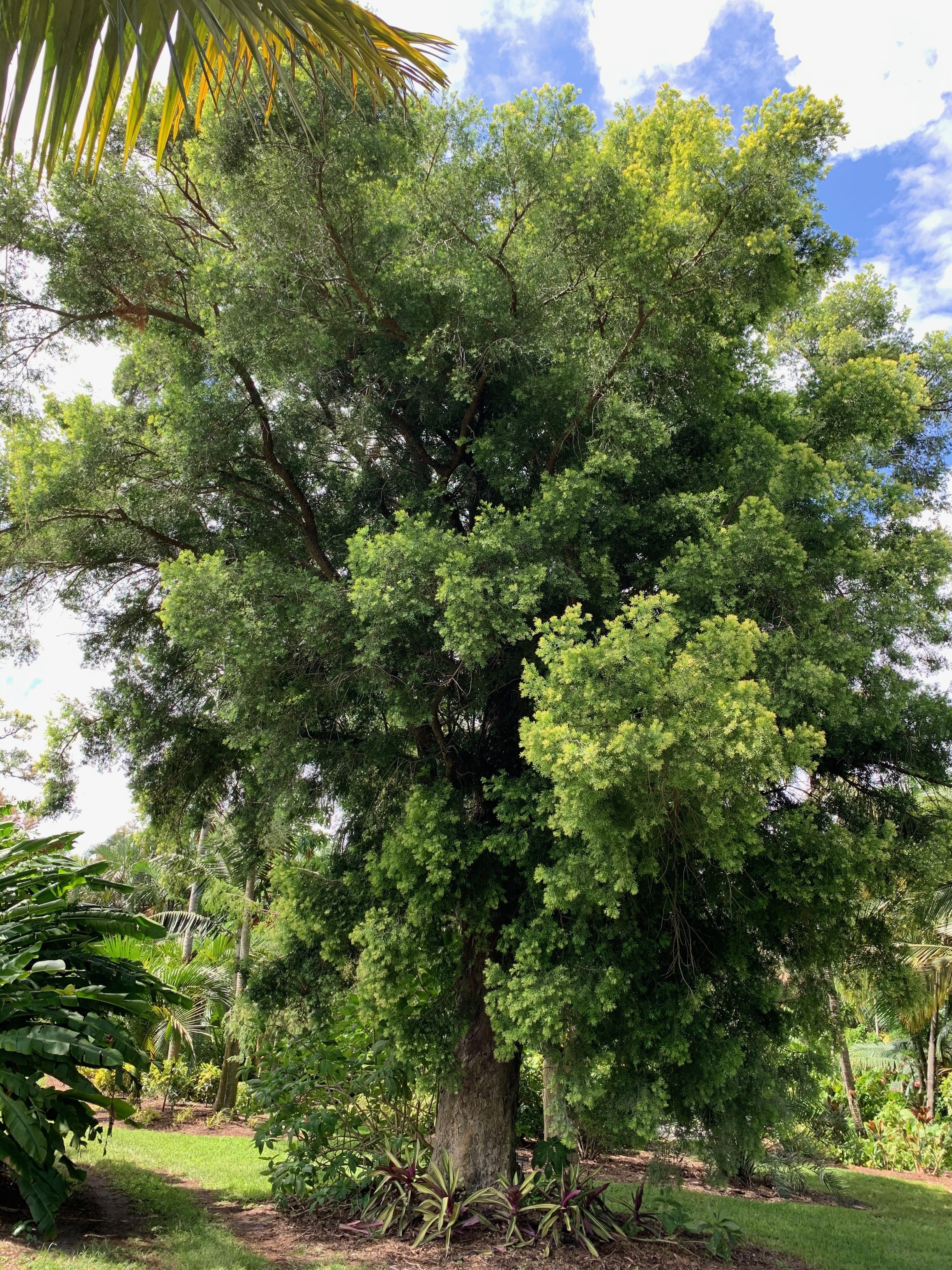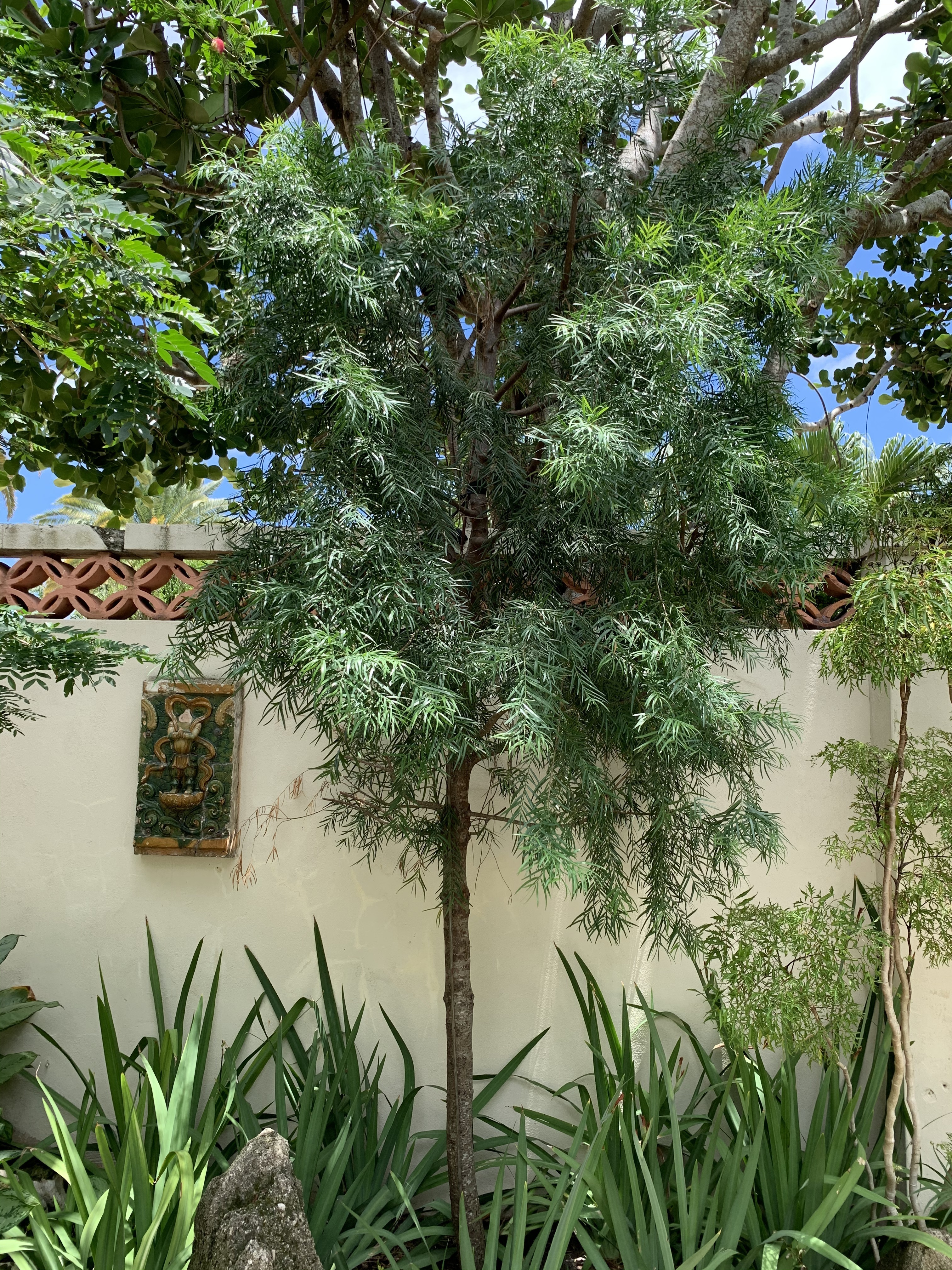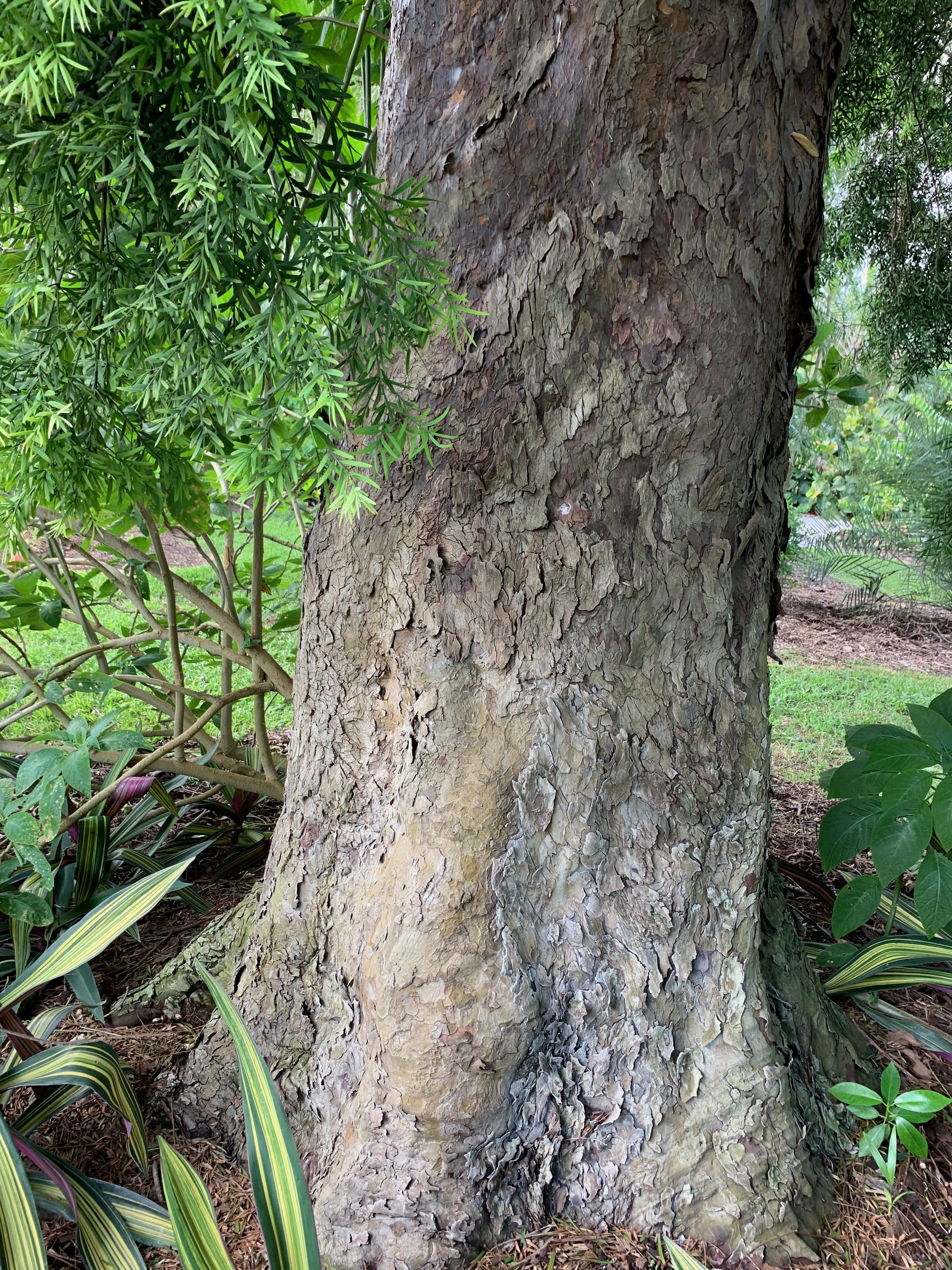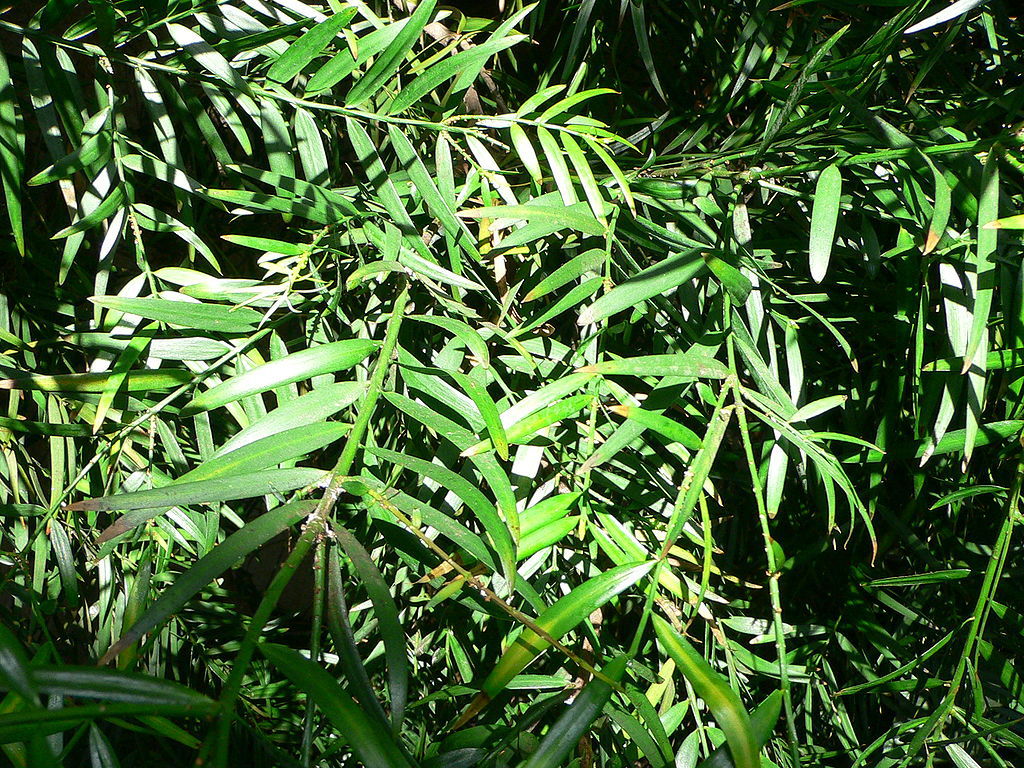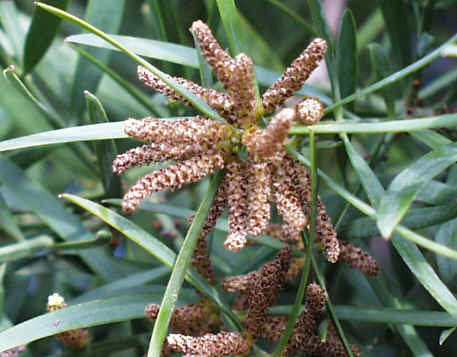Afrocarpus gracilior, as described in 1989 by Robert Knud Friedrich Pilger (1876-1953) and finalized C.N. Page, in New and maintained genera in the conifer families Podocarpaceae and Pinaceae; Notes of the Royal Botanical Garden Edinburgh vol.45 no.2. It is commonly known as African fern-pine. It is an important timber tree in eastern Africa, used for building construction, paneling, flooring and furniture.
Description. African fern pine is a medium-sized evergreen coniferous species of tree, which will grow to mature heights of 65 to 130 feet (20 - 40 m) tall, rarely to 150 feet (50 m), with a trunk 20 to 32 inches (50 - 80 cm) in diameter at breast height.
In appearance it closely resembles A. falcatus, which has slightly smaller leaves (mostly 0.8 to 1.2 inches / 2-4 cm long), and slightly smaller (to 0.6 inch / 15 mm long), spherical cones with verrucos (orange-like) skin.
Distribution. This species is native to the Afro-montane forests of Ethiopia, Kenya, Tanzania, and Uganda, growing at elevations of 5,800 to 7,700 feet (1,800 - 2,400 m) above sea level with a mean annual precipitation of 45 inches (1,148 mm).
